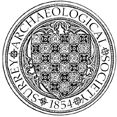Mickleham Downs
Excavation by J English of SyAS as part of an ongoing landscape survey. Plough marks were noted, but thought to be a result of Second World War activities despite small amounts of prehistoric and Romano-British pottery being recovered. Further trenches recovered larger quantities of pottery, and noted two postholes (not excavated) suggestive of a Romano-British settlement in the vicinity. (354)


